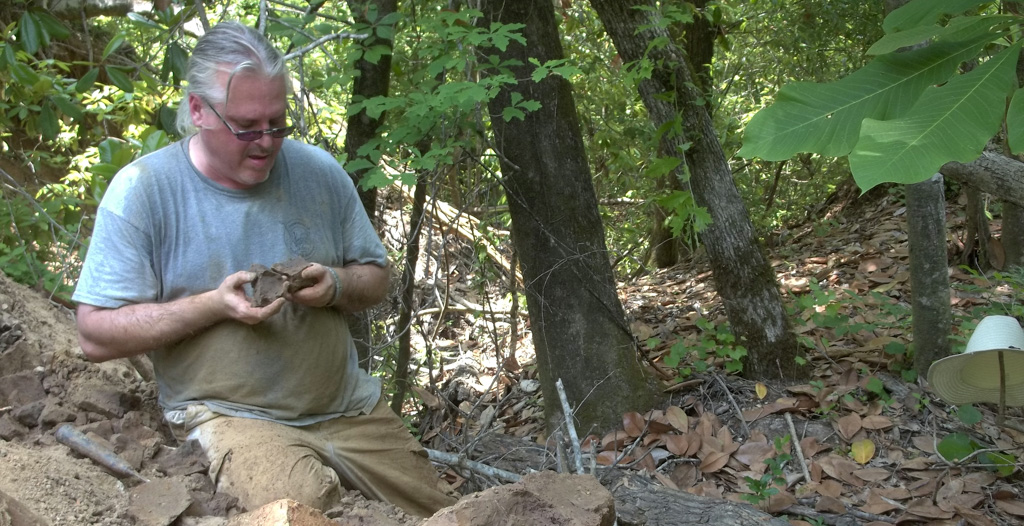Passionflower Species Named in Honor of Late Biology Professor
Posted on July 2, 2024

University of South Alabama biology professor Dr. Brian Axsmith discovered a previously undescribed species of passionflower. Now it has been named for him posthumously.
The fossil, now known in the Latin form as passiflora axsmithii, was uncovered in south Mississippi and is approximately 25 million years old, making it the oldest example ever found of that genus.
Axsmith, who served as a biology professor at South for more than 20 years, died after contracting the COVID-19 virus in 2020.
He originally identified the fossil as a passiflora species before setting it aside for further study. After his death, the specimen underwent analysis that determined it to be a new fossil.
“His colleagues and friends considered him to be one of the most recognized and influential investigators of a generation in the field of paleobotany,” said Dr. Kelly Major, professor of biology and interim department chair. “Brian was internationally recognized for his many discoveries.”
The International Code of Nomenclature for algae, fungi and plants is the standardized set of rules and recommendations that must be followed for giving a scientific name to any of those organisms, or fossils of those organisms. This is the fourth fossil plant that has been named in Axsmith’s honor.
“It is not uncommon for a taxon, especially genus or species, to be named after a person who has done a lot of research in the field and is held in high regard,” said Dr. Debra Stults, Axsmith’s first graduate student after he was hired by South in 1999. “Brian fits into both of those categories.”
Besides his deep knowledge of paleobotany, it was Axsmith’s love for teaching and discovery that drew people to him.
“Brian had the ability to explain complicated concepts in an understandable way,” said Stults. “His enthusiasm was contagious and instrumental in attracting colleagues and students on his collecting trips.”
Standing six-feet-three-inches tall and a giant in his field, Axsmith garnered significant grant funding in support of his work from the National Science Foundation and National Geographic Society.
He published nearly 50 peer-reviewed articles in high-profile journals and was a sought-after speaker about paleobotany.
Axsmith’s other awards and accolades included the College of Arts and Sciences Early Career Award for Scholarship and Academic Achievement, the College of Arts and Sciences Dean’s Lecture and four Top Prof awards while at South.





